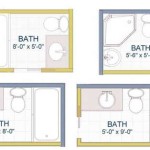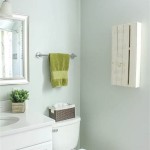How to Tile Bathroom Floors
Tiling a bathroom floor is a great way to add style and value to your home. While it can be a bit of a challenge, it is definitely a project that can be completed by do-it-yourselfers. Here is a step-by-step guide to help you get started.
Step 1: Prepare the Subfloor
The first step is to prepare the subfloor. This means making sure that it is level, flat, and free of debris. If the subfloor is not level, you will need to level it with a self-leveling compound. If there are any holes or cracks in the subfloor, you will need to fill them with a patching compound.
Step 2: Install Backerboard
Once the subfloor is prepared, you can install the backerboard. Backerboard is a thin layer of material that is installed over the subfloor to provide a smooth and stable surface for the tiles. There are different types of backerboard available, so be sure to choose one that is appropriate for your project.
Step 3: Apply Thinset Mortar
Thinset mortar is a type of adhesive that is used to install tiles. It is important to use the right type of thinset mortar for your project. There are different types of thinset mortar available, so be sure to read the labels carefully before choosing one.
Step 4: Set the Tiles
Once the thinset mortar is applied, you can set the tiles. Start by setting the tiles in the center of the room and work your way out. Be sure to use spacers between the tiles to ensure that they are evenly spaced.
Step 5: Grout the Tiles
Once the tiles are set, you can grout them. Grout is a type of material that is used to fill the joints between the tiles. There are different types of grout available, so be sure to choose one that is appropriate for your project.
Step 6: Seal the Tiles
Once the grout is dry, you can seal the tiles. This will help to protect them from moisture and stains. There are different types of sealers available, so be sure to choose one that is appropriate for your project.
Tips for Success
- Use a level to make sure that the subfloor is level. This will help to prevent the tiles from cracking or buckling.
- Install the backerboard correctly. This will help to provide a smooth and stable surface for the tiles.
- Use the right type of thinset mortar. This will help to ensure that the tiles are securely bonded to the subfloor.
- Set the tiles evenly spaced. This will help to create a professional-looking finish.
- Grout the tiles completely. This will help to prevent moisture from seeping between the tiles.
- Seal the tiles. This will help to protect them from moisture and stains.

How To Tile Floors Walls Sincerely Sara D Home Decor Diy Projects

How To Lay Bathroom Tile 5 Easy Steps Rubi Blog Usa

Laying Floor Tiles In A Small Bathroom Houseful Of Handmade

Plank Tile Bathroom Flooring Happihomemade Family Friendly Recipes

How To Tile A Bathroom Floor For Beginners Making Maanita

Laying Floor Tiles In A Small Bathroom Houseful Of Handmade

Why Bathroom Floors Need To Move

Big Tile Or Little How To Design For Small Bathrooms And Living Spaces S Of America

How To Paint Your Bathroom Floor Tile Young House Love

How To Tile A Bathroom Floor It S Done Thrifty Decor Diy And Organizing







